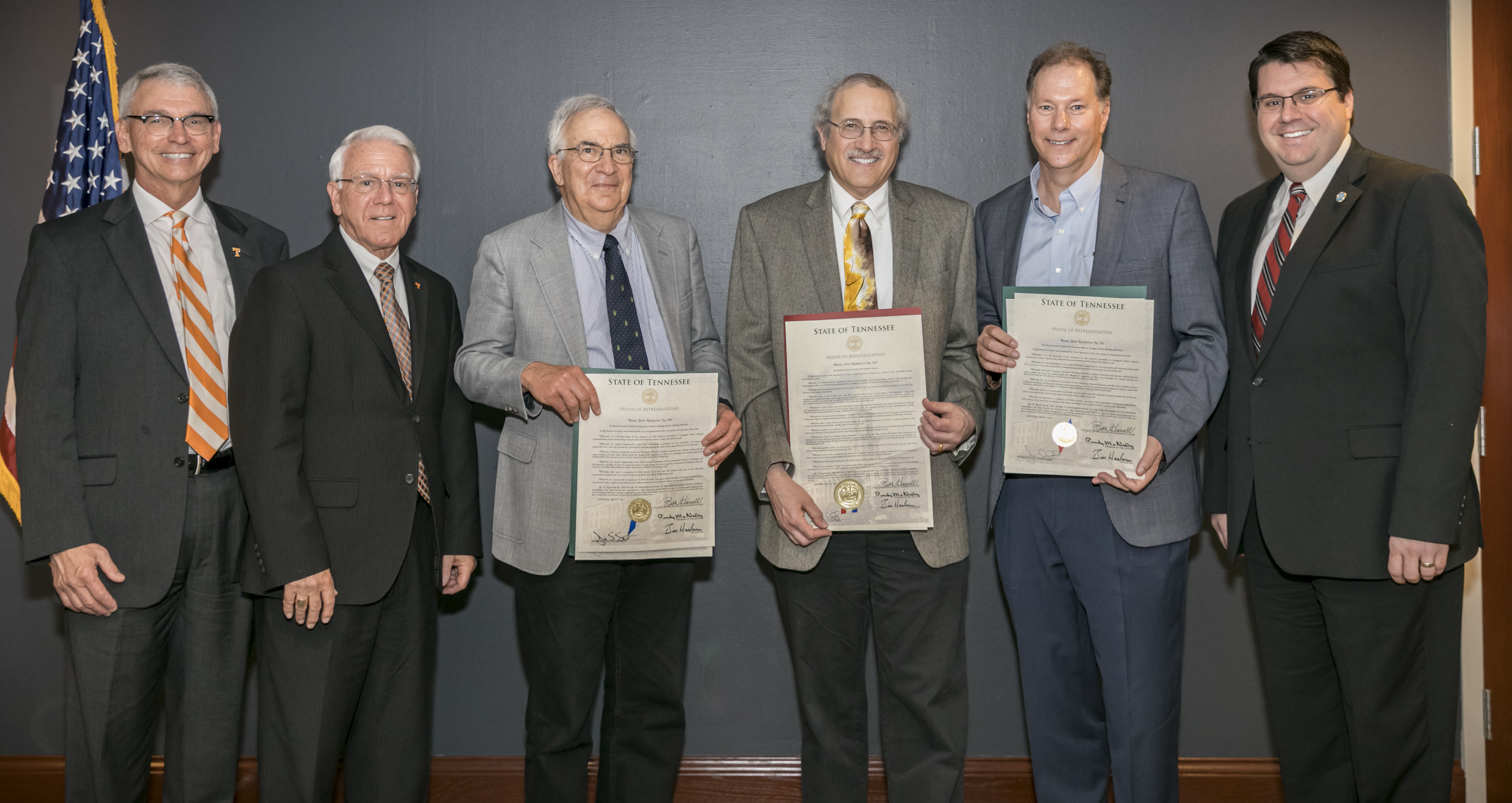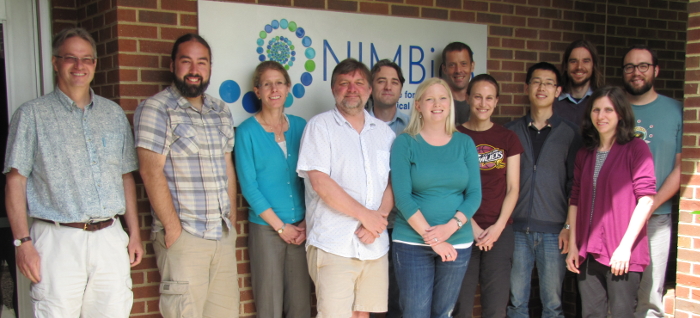
The last meeting of the Working Group in May 2015. (L to R): James Bever, Jonathan Bauer, Katharine Suding, Allan Strand, Dan Johnson, Kerri Crawford, James Umbanhower, Karen Abbott, Jiang Jiang, Maarten Eppinga, Liza Comita, Keenan Mack. Not Pictured: Mara Baudena.
This is the story of how researchers from different corners of the scientific universe can come together to create new synthesis — it involves two former NIMBioS postdocs, a former sabbatical fellow and the special alchemy of a NIMBioS Working Group.
From 2013 to 2015, empiricists and theoreticians studying plant-soil feedback met at NIMBioS with the goal of better understanding the potential role of the soil community organisms that drive diversity patterns within plant communities. They formed the NIMBioS Working Group on Plant-Soil Feedback.
Biologist Allan Strand from the College of Charleston was on sabbatical at NIMBioS; Jiang Jiang and Keenan Mack were in residence as postdoctoral fellows. All three joined the Working Group.
The efforts of the Working Group were rewarded this week with a paper in Nature Ecology & Evolution. The study, “Frequency-dependent feedback constrains plant community coexistence,” outlines a new way to mathematically describe the social network that creates and maintains biodiversity in forests. The equation can be applied to plant communities of any number of species, whereas previously, only predictions of pairwise species interaction were possible.
The authors, which included Jiang, Mack and Strand, tested their theory using observations of tree species diversity on more than 200,000 locations in North America.
“We had previously found spatial patterns of seedlings consistent with strong plant-soil feedback in the data. Our new theory enables us to demonstrate that these feedbacks can explain the high diversity of tree species in warm, moist forests in the South East of the United States and the decline in tree diversity in colder and drier forests,” said senior author of the study and Working Group co-organizer James Bever in a press release. Bever is a professor of ecology and evolutionary biology at the University of Kansas.
“To be able to meet with Working Group participants in Knoxville not just once, but four times between 2013 and 2015 was crucial to getting to the bottom of the intriguing problem of how to quantify community-level plant-soil feedback, ” writes lead author and Working Group co-organizer Maarten Eppinga, in a blog post about the paper. Eppinga is an assistant professor of environmental sciences at Utrecht University.
The other authors on the paper—all from the Working Group—are Mara Baudena, an assistant professor of geosciences at Utrecht University, and Daniel J. Johnson, an assistant professor of forest resources and conservation at the University of Florida.
NIMBioS Working Groups are relatively small with no more than 15 participants, focus on a well-defined topic and have well-defined goals and metrics of success. Since 2008 when the institute was established, NIMBioS has hosted 58 Working Groups.
Jiang, who is now a professor in the Department of Soil and Water Conservation at Nanjing Forestry University, China, joined the Working Group during its second meeting. “It was a really good experience with exciting discussions among top scientists in their areas,” he wrote in an email.
For Strand, his sabbatical at NIMBioS changed the way he approaches research, for the better. “I do research differently now after my sabbatical at NIMBioS. Now when I begin a research project, I always think about what team can I assemble to work on this and what data already exists. Before I tended to do this on my own,” Strand said in an interview.
The result? “All of a sudden my publication rate doubled, my funding is better than it was,” he said. “It made me more collaborative and more willing to think about existing data and modeling that.”
Congratulations to the Plant-Soil Feedback Working Group!
Eppinga MB et al. 2018. Frequency-dependent feedback and plant community coexistence. Nature Ecology and Evolution.
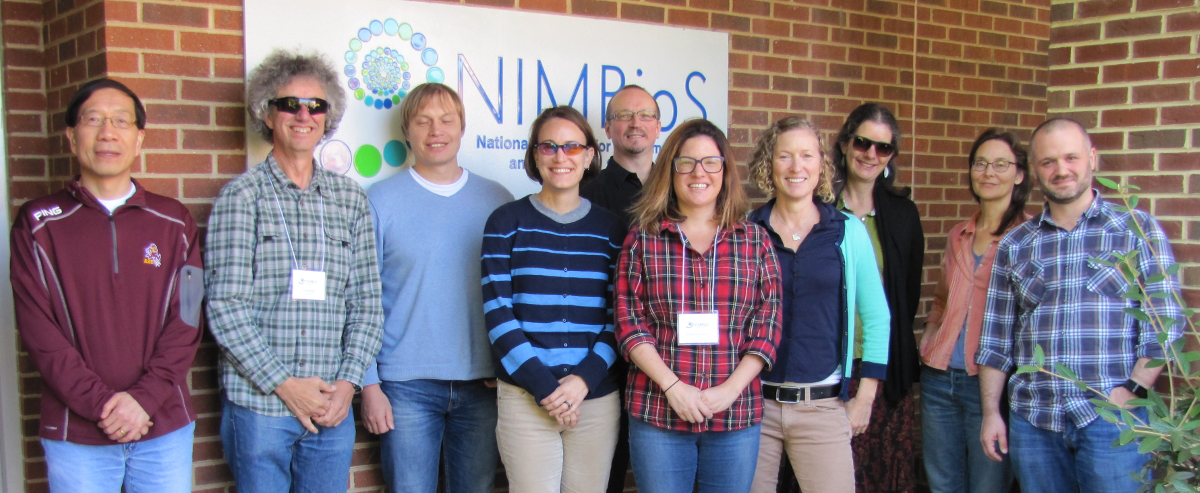
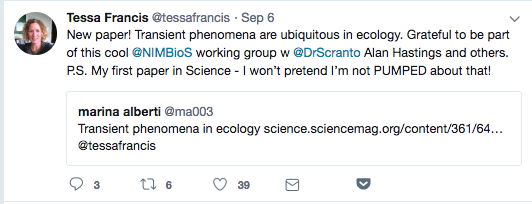

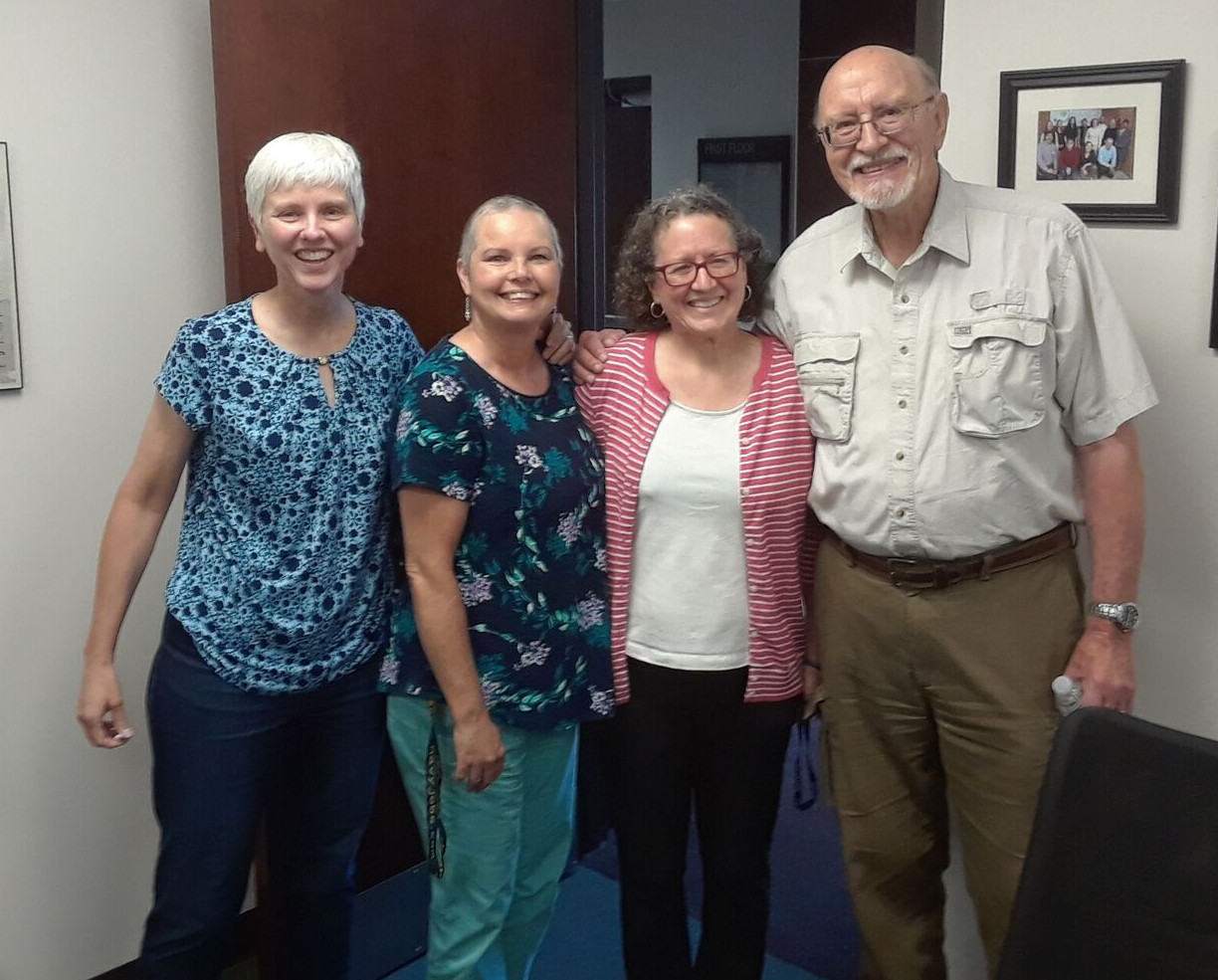




 What is g2p2pop? The catchy abbreviation describes a new effort to model genomes to phenomes to populations in a changing climate.
What is g2p2pop? The catchy abbreviation describes a new effort to model genomes to phenomes to populations in a changing climate.
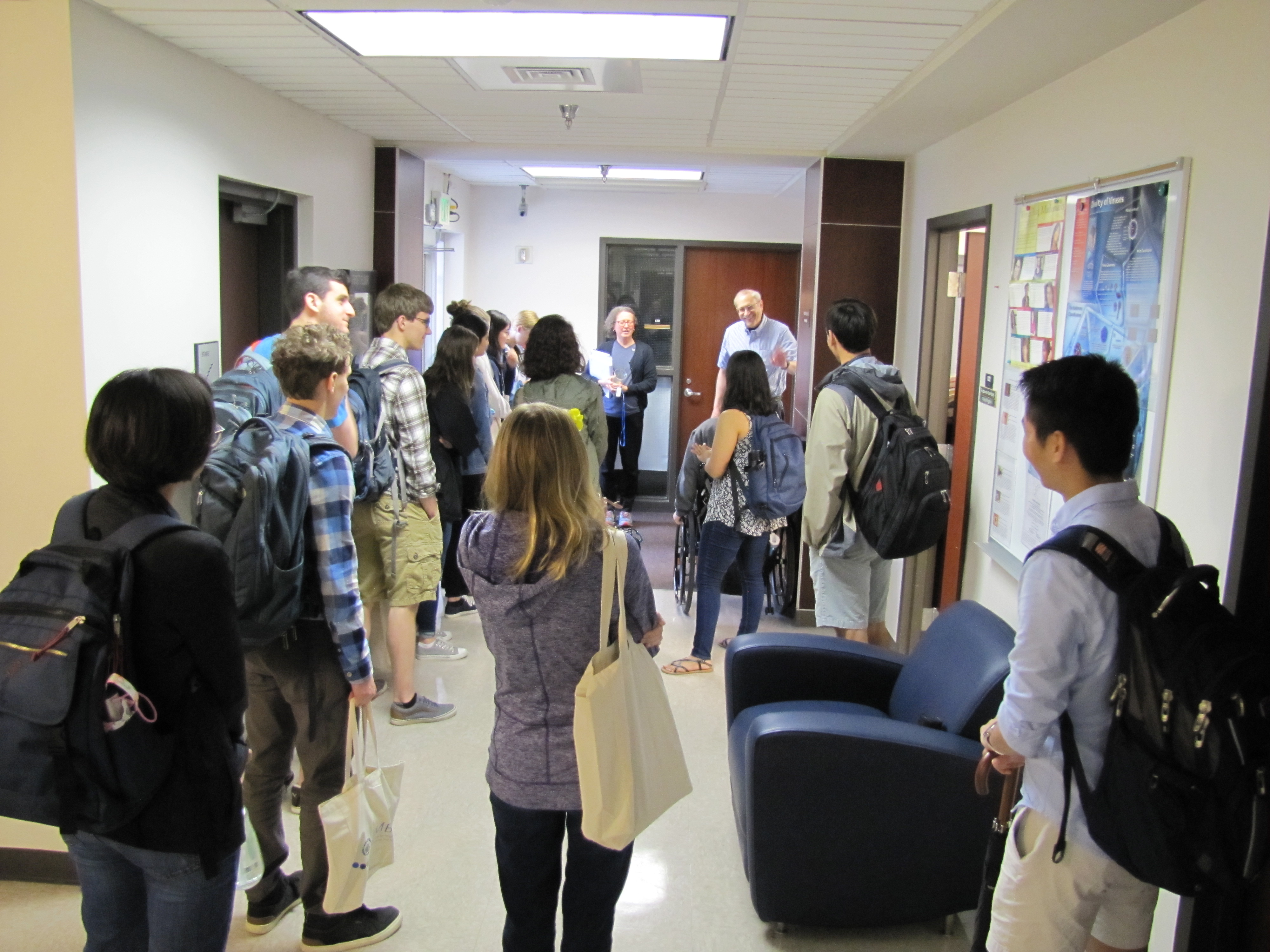
 Why did the human brain evolved to its unusually large size? Former NIMBioS GRA Mauricio González-Forero has some answers in a new
Why did the human brain evolved to its unusually large size? Former NIMBioS GRA Mauricio González-Forero has some answers in a new 